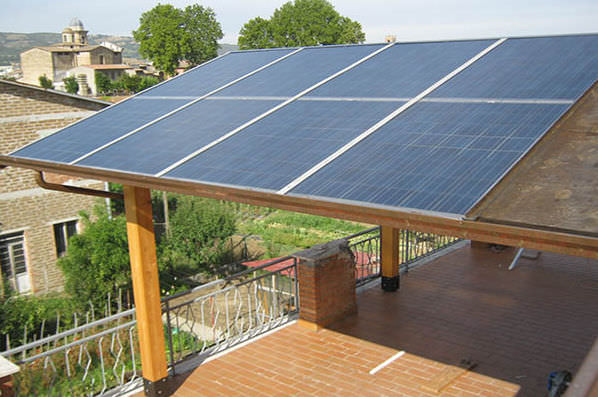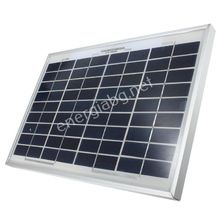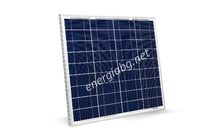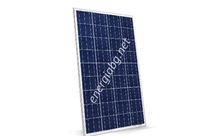Poly-crystalline Solar Panels
Polycrystalline silicon solar cells
The first polycrystalline silicon PV panel, also known as polysilicates (p-Si) and multicrystalline silicas (mc-Si), was introduced in 1981. Unlike monocrystalline polycrystalline photovoltaic panels do not require the "Czochralski process ". The raw silicon is melted and poured into a square shape, cooled and cut into perfectly square flakes.

Advantages:
- The process of polycrystalline silicon production is relatively simple, and this makes it cheaper. The amount of silicon lost is much less than the monocrystalline.
- Polycrystalline solar panels can work in the shade. In case a shadow falls on part of the panels, this will not affect others and the system will not shut down. Those who are in the shade will also produce electricity, but of course, with less efficiency. They are suitable for changing conditions.
- Lack of maintenance. This type of panel is very little pretentious. Once installed on the roof, they can never be cleaned and run with much of their full capacity.
Disadvantages:
- The polycrystalline solar panel has a lower thermal tolerance (65C) than the monocrystalline. This means that it works a little worse than the monocrystalline at a higher temperature. Heat may affect the performance of the panels and shorten their life. However, this effect is insignificant and most people do not take it into account.
- The efficiency of polycrystalline photovoltaic panels is typically around 13-16%. Because of the low purity of silicon, they are not as effective as monocrystalline.
- They take up more space. You need to cover more space to achieve the same electrical power as monocrystalline panels. However, this does not mean that each monocrystalline solar panel works better than polycrystalline silicon.
- Some people think monocrystalline and thin-film solar panels are more aesthetic than dark blue polycrystalline ones.






